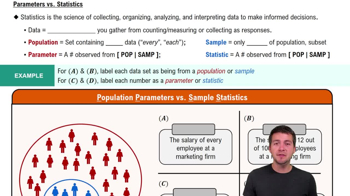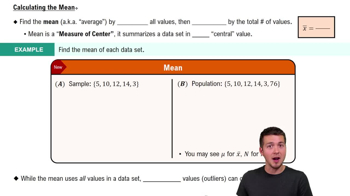Here are the essential concepts you must grasp in order to answer the question correctly.
Statistic
A statistic is a numerical value that describes a characteristic of a sample, which is a subset of a larger population. It is calculated from data collected from that sample and is used to estimate population parameters. For example, the average score of a class on a test is a statistic, as it reflects only the students in that class.
Recommended video:
Parameters vs. Statistics
Parameter
A parameter is a numerical value that describes a characteristic of an entire population. Unlike a statistic, which is derived from a sample, a parameter represents the true value for the whole group. For instance, the average height of all adults in a country is a parameter, as it encompasses the entire population rather than just a sample.
Recommended video:
Parameters vs. Statistics
Mean
The mean, often referred to as the average, is a measure of central tendency calculated by summing all values in a dataset and dividing by the number of values. It can be classified as either a statistic or a parameter depending on whether it is derived from a sample (statistic) or the entire population (parameter). Understanding the context of the data is crucial to determine which classification applies.
Recommended video:





